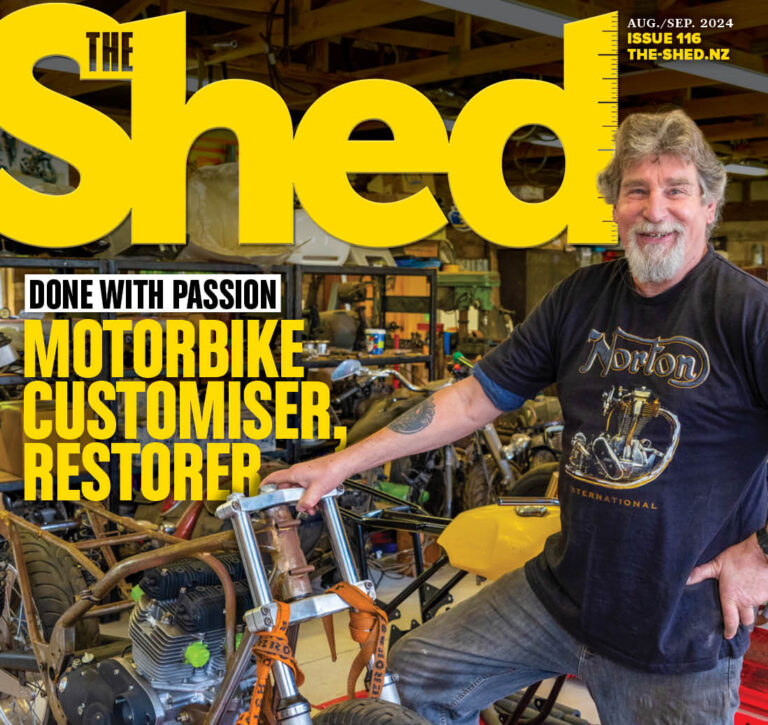…the Electron rocket. It will have a 10.5 tonne launch weight.
NZ ROCKET PROGRAMME TAKES OFF IN 2015
New Zealand’s space programme sounds like an amusing caption or billboard slogan but Rocket Lab’s Peter Beck is absolutely serious about making our small country a leader in the commercialisation of space. After winning the Most Inspiring Individual award and top prize in the Innovation in Design and Engineering category for his Electron rocket at the 2014 NZ Innovators Awards ceremony, he has decided it is time to show New Zealand what he and his team have been up to. Since the 2009 launch of the suborbital- sounding rocket Atea 1, Rocket Lab may have been out of the headlines but they have not been idle. In late 2015, Electron, their latest rocket, will soar skywards to place a 100-kilogram satellite into Low Earth Orbit (LEO). It is planned that this launch of the Electron will herald a weekly satellite launch programme, based in New Zealand and aimed at satisfying the rapidly growing demand for small LEO satellites.
Saturn V rocket was 111 metres tall compared to Electron’s 18 metres.
Electron
The Electron rocket is constructed in carbon fibre, is 18 metres tall, one metre in diameter and weighs 10.5 tonnes at launch. It has been designed to deliver a 110 kg payload into a 500 km high orbit in almost any weather conditions. The rocket is powered by nine motors generating 18 kN thrust on the first stage and one motor on the second stage. Each motor nozzle can be individually steered to keep the rocket within 0.2 degrees of its planned trajectory. The Rutherford rocket motor, designed by Rocket Lab specifically for the Electron, is powered by liquid oxygen (LOX) and rocket grade kerosene (RP1). Launching the Electron into space will use less fuel than a 600 km flight in a Boeing 737. The same Rutherford engines will power the first and second stages with just a nozzle change to the second stage to suit operation in the vacuum of space. To keep the rocket on track, powerful computers are required to make the instant, minute adjustments needed to deliver a satellite to a precise orbit. While the avionics package on the first space shuttle weighed 4.5 tonnes excluding wiring, Electron’s avionics weigh less than 9 kg.
Peter Beck of Rocket Lab…
Most Inspiring Individual Award.
VLM
Traditionally, rockets use either solid or liquid fuel and each has pros and cons. Solid fuel is like your sky rocket; light the touch paper and stand well clear. While simple, it cannot be controlled once lit, performance can be affected by voids or cracks and it has a lower thrust-to-weight ratio than liquid-fuelled rockets. Traditional liquid fuels such as LOX/RP1, while offering better thrust-to-weight ratio and the ability to be controlled by throttle, present difficulties with storage and handling.
The previous test rockets hang on the wall.
Peter developed a fuel that is normally solid but liquefies under pressure, allowing it to be injected and so controlled by throttle. The Viscous Liquid Monopropellant (VLM) as it was named was tested in a purpose-built sidewinder missile, the Atea 1 launched from Great Mercury Island in front of representatives from NASA, US Navy and DARPA. The new fuel outperformed the traditional missile propellant and was able to be shut down in mid-flight. While ideal for missiles, VLM proved less suitable for the space rockets Peter is making.
Young
At 37 years old, Peter seems very young to be heading a multi-million dollar space programme but his extraordinary talent has impressed space industry experts and opened up funding from governments and a top venture capital fund. Peter comes from a family of Invercargill engineers. His brother works at the Tiwai Point aluminium smelter and his father built a one-metre reflector telescope in his shed. The telescope helped give Peter a taste for astronomy and a burning desire to create something that could reach space.
A space programme out of the southern hemisphere.
Like most boys growing up in Invercargill, he got into modifying cars but became fascinated by the pure power available in a rocket engine. “Internal combustion engines are so inefficient,” he says. “I can pack 1000 horsepower into a rocket the size of a wine bottle.” His early rocket experiments included a rocket-powered bike and rocket-powered scooter as well as rollerblades powered by a jet pack.
The VLM-powered Sidewinder missile…
…launched from Great Mercury Island in New Zealand’s Bay of Plenty.
A toolmaking apprenticeship at whiteware developers Fisher & Paykel gave him access to a comprehensive engineering workshop where he honed his hands-on skills before graduating to the design office. There he gained experience in running CFD (computational fluid dynamics) and FEA (finite element analysis) software. Having access to the company’s facilities allowed him to design, make and test his ideas after hours. Leaving F&P, Peter worked at Fitzroy Yachts in Taranaki, project-managing the build of a 120-foot (36-metre) superyacht. While doing acoustic research to reduce vibration noise in the master cabin, he made contacts with Industrial Research Limited (formerly IRL, now known as Callaghan Innovation) that led to a job offer as a research engineer. It was the perfect place for a budding rocket engineer. “I had the Crown’s assets at my disposal,” Peter quips, “and the best minds in the country to bounce ideas off.” Working on material ranging from high-performance composites to superconductors, he found that almost everything he was exposed to during his day job had relevance to his main goal of building a rocket.
Atea 1 powered by LOX/RP1.
America
In 2006, when his wife Keryn, an oilfield engineer, was offered a job in the USA, Peter took a month off to go and meet with rocket builders in the States. “I was a bit naive. It was post 9/11 and there was no way they were letting any foreigner inside their facilities.” Undeterred, he did manage to make contact with some rocket engineers and found they were at exactly the same level of development he had reached. “They had made no leap of knowledge,” he says.
Hi-tech tooling at Rocket Lab includes a CNC lathe.
Excited by the discovery that his level of research was equal to that of a huge team with the backing of a superpower, he sat on the plane home dreaming up the name Rocket Lab and set about getting together some serious funding. Getting seed money from New Zealand entrepreneur Mark Rocket allowed Peter to build and launch Atea 1 in 2009 from Great Mercury Island. While New Zealand’s first locally made rocket created a small ripple of excitement in this country, it caused a much bigger wave overseas. Almost all space flights before Atea 1 had been done by just a few governments with huge budgets. Here was an individual in a tiny nation, building a rocket capable of Mach 5 and of reaching 100 km into space. All of a sudden, the companies who had refused to open their doors to Peter were scrambling to get in touch. The developments he had come up with (including using carbon composites, wireless-range safety and space-based telemetry) were groundbreaking and they wanted to know what else he was working on. Plenty, was the answer.
Rocket Lab compares existing and its own future satellite launch stats.
While looking for suitable propellants, Peter developed VLM (viscous liquid monopropellant) that, although unsuitable for his space rocket, has performance advantages over traditional solid fuels (See Panel, VLM). With funding from the American research organisation DARPA (Defense Advanced Research Projects Agency) VLM has been tested and licensed for further development. Another project Peter has developed is Instant Eyes, a 225 mm-long, 500 gram hand-launched rocket that can deploy to a height of 600 metres, sending back encrypted, high-resolution images of its surroundings as it descends. Instant Eyes and VLM are spinoffs to the main goal but have been important in establishing Rocket Lab’s credibility.
A space workshop Down Under.
Ambitious
With money from the major Silicon Valley venture capital company Kohsla Ventures and New Zealand government funding, Peter is embarking on his ambitious space project based on a compelling business model. “Traditional satellites, like the ones used by Sky TV [for its direct broadcasting satellite TV service], are about the size of a bus, can cost up to $US2 billion dollars to put into geosynchronous orbit and last around 20 years,” he explains. “However, once they die they become space junk, staying up there for ever.” A geosynchronous orbit stations a satellite in a constant position above the earth. The satellites that Peter is aiming his rockets at are the smaller, low earth orbit (LEO) type. Packing the same capabilities of many of the older satellites, they can be placed in a constantly moving array that can cover the globe. About the size of a fridge, they last between five and seven years but, when dead, will fall out of orbit and burn up instead of adding to the more than 25,000 trackable pieces of space junk orbiting the planet. The possibilities for the new breed of satellites are many: real-time maps, cheap satellite phone calls, minute-by-minute weather tracking, borderless internet and crop monitoring to name a few. The technology is there. The problem has been, how to get satellites into orbit? More than 945 are waiting to be launched over the next five years and the industry is still growing. The current waiting time to launch is two to four years and at a cost of around $US130 million it is still a very expensive exercise.
Electron rocket on the way to the Big Boys’ Toys show.
Under $5 million
Peter is building a production-line rocket, developed specifically for a 100 kg payload and able to be launched in all conditions for under US$5 million, drastically undercutting current costs. Once the rocket is in production, 50-plus launches per year are planned. Peter comments that being an island nation miles from anywhere and surrounded by ocean has its advantages for New Zealand for once. “We have 20 years of weather data and have built the rocket to be able to be launched in almost all conditions.” The rocket, named Electron, has been designed from a clean sheet of paper to ensure every single component performs its function within strict parameters. Trying to accomplish the seemingly impossible dream of building an entire space programme in six years is what makes Peter thrive. “You only get one ride on the rollercoaster” is a mantra. He has 28 staff and would hire another 28 tomorrow if he could. “We have 25 precent PhDs but we don’t just want engineers, we need engineers who can solve problems, PhDs who can use a lathe, though if I had to choose, I’d hire an engineer with a portfolio of work and no degree over an inexperienced graduate.” Adding, “They will also have to be happy to work until 2am on a Sunday to get things done if needed.”
On the day The Shed arrived at Rocket Lab HQ we were not allowed access to the workshop as they were working on commercially sensitive equipment. They have a few examples of previous projects on display in the foyer and a full-size model of the Electron rocket was recently displayed at the Big Boys Toys show in Auckland. Peter’s reputation for delivering on his promises has paid off with more than 30 rockets already booked and they are on target for an initial launch date of late 2015. Peter has not yet selected a launch site but there are several New Zealand councils that are very keen to have a space programme based in their region. The unlikely scenario of New Zealand being a base for a billion-dollar space industry would have been laughed at a couple of years ago but with Peter Beck’s determination, the reality seems just around the corner.



